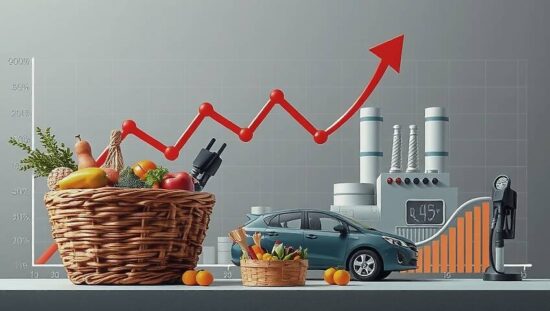German producer prices for industrial goods in January 2025 were 0.5 percent higher than in the same period of the previous year, according to the Federal Statistical Office (Destatis) on Thursday. Compared to the previous month, the prices decreased by 0.1 percent. The main reason for the increase in producer prices compared to the previous year was the price hike for consumer goods. Investment goods and consumer goods were also more expensive, while energy and intermediate goods were cheaper. Excluding energy, producer prices rose by 1.2 percent compared to the previous year and by 0.3 percent compared to the previous month.
Energy was 1.0 percent cheaper than in the same period of the previous year and 0.9 percent cheaper than in the previous month. The largest influence on the rate of change compared to the previous year for energy was the price drop for electrical power. Over all consumer groups, electricity prices fell by 1.8 percent compared to January 2024 and by 2.5 percent compared to the previous month. Natural gas in the distribution network cost 1.9 percent less than in January 2024 and 2.8 percent less than in the previous month. District heating cost 1.5 percent less than in January 2024 and 1.5 percent less than in the previous month.
Mineral oil products, on the other hand, were more expensive, with prices rising by 0.7 percent compared to the previous year and by 4.4 percent compared to the previous month. Light heating oil cost 1.9 percent more than a year earlier and 10.1 percent more than in the previous month. Fuel prices were 0.5 percent higher and 5.6 percent higher than in the previous month.
Consumer goods were 3.0 percent more expensive than in January 2024 and 0.5 percent more expensive than in the previous month, the statisticians continued. Food was 3.5 percent more expensive than in January 2024. Butter was 39.8 percent more expensive and sweets were 24.0 percent more expensive. Beef was 18.0 percent more expensive than in January 2024 and 2.3 percent more expensive than in the previous month. On the other hand, sugar was 33.8 percent cheaper and pork was 8.8 percent cheaper. Wheat flour was 4.1 percent cheaper.
Investment goods were 1.9 percent more expensive than in the previous year and 0.8 percent more expensive than in the previous month. Machines were 1.9 percent more expensive than in January 2024. The prices for vehicles and vehicle parts rose by 1.4 percent compared to January 2024. The prices for intermediate goods were 0.1 percent lower than in the previous year and unchanged compared to the previous month.
Glass and glassware were 4.8 percent cheaper than in the previous year, particularly flat glass, which was 16.4 percent cheaper than in January 2024. Animal feed was 1.3 percent cheaper than in the previous year. The prices for basic chemicals remained unchanged compared to the previous year.
Price increases compared to January 2024 were seen, for example, in natural stones, gravel, sand, clay and kaolin (3.4 percent), gypsum products for construction (4.6 percent), electrical transformers (2.3 percent) and cables and electrical installation materials (1.0 percent).
Wood and wood and cork products cost 2.5 percent more than in January 2024. Larch wood was 11.4 percent more expensive, while beech wood was 5.7 percent cheaper. The prices for plywood were 1.1 percent lower than in the previous year.
Metal prices rose by 0.1 percent compared to the previous year and fell by 0.1 percent compared to the previous month. The prices for copper and semi-finished copper products were 9.4 percent higher than in the previous year, while pig iron, steel and ferroalloy were 8.9 percent cheaper than in January 2024. The prices for reinforcing steel fell by 2.6 percent compared to the previous year.





